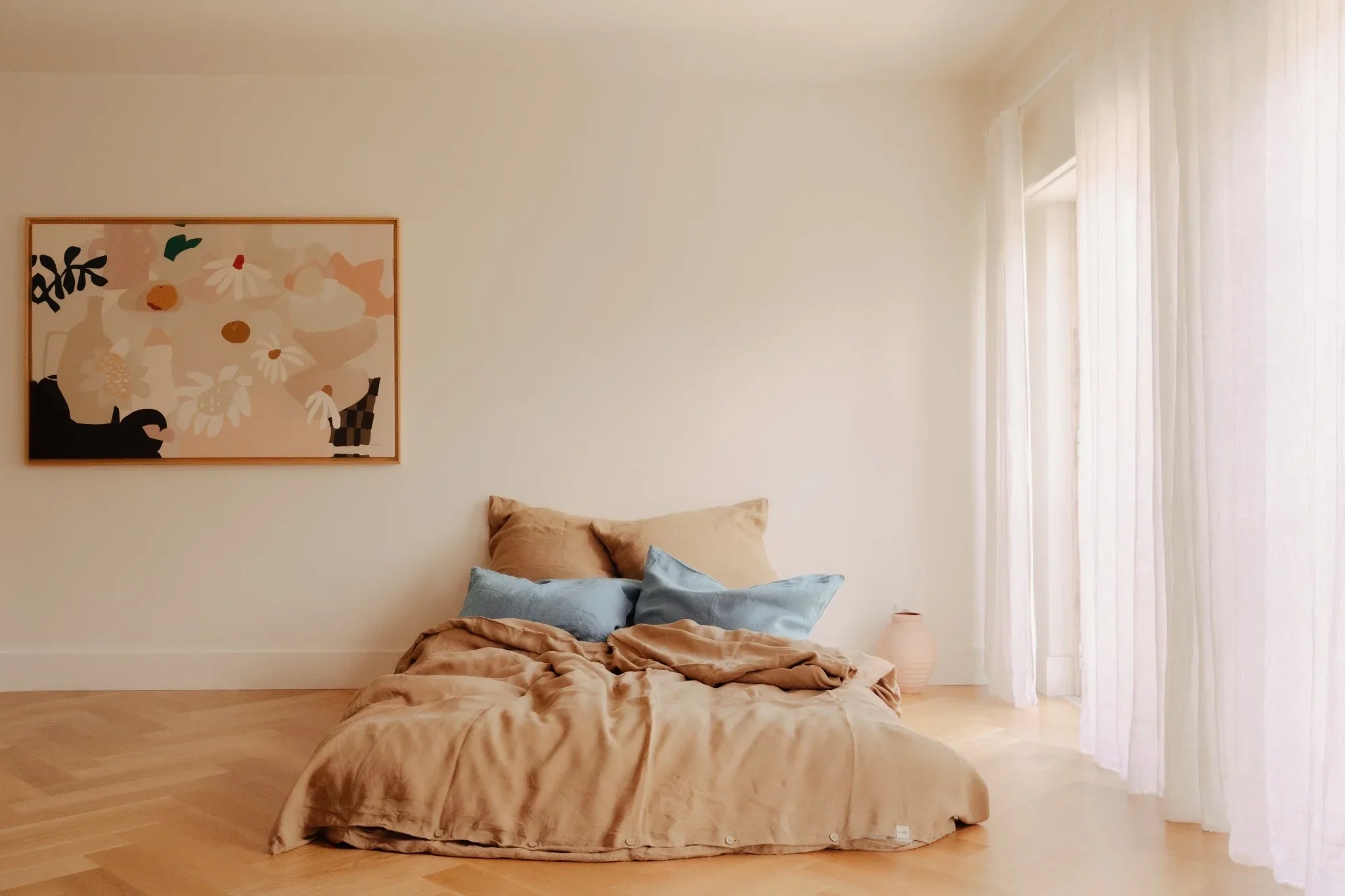Spring brings light, warmth, and new life - but for many, it also brings a challenge: hay fever season. When pollen dances through the air, our homes become an important refuge. A place where we can breathe deeply and rejuvenate.
Choosing the right materials plays a key role here. Our linen bedding is not only a statement of timeless beauty, it's also a natural ally for anyone sensitive to pollen or house dust.
In this article, we'll show you why linen is an unbeatable companion right now – and how you can preserve its unique quality for a long time with the right care.
1. Why linen is perfect for allergy sufferers
Linen is obtained from the flax plant - one of the oldest and most natural raw materials in the world. Its fibers are naturally:
- Antibacterial and antistatic: This means less chance for mites, bacteria and dirt to settle.
- Moisture-regulating: Linen absorbs moisture quickly but releases it just as quickly. A dry sleeping environment makes it difficult for allergens like pollen and dust mites to thrive.
- Temperature-regulating: In spring, when the nights are still cool but the days are already warmer, linen ensures that you always sleep comfortably – neither freezing nor sweating.
This creates an environment that promotes relaxation and restful sleep, especially for allergy sufferers – even when pollen concentrations outside are rising.
2. Wash properly: Gently but thoroughly
Linen thrives on gentle but consistent care. To keep your bed linen hygienically clean and soft at the same time, follow these tips:
- Temperature: Ideally, wash your linen bedding at 40°C. This temperature is sufficient to remove pollen and allergens without unduly damaging the fibers.
- Detergent: Choose a mild, organic detergent without harsh additives. These protect the natural fibers and prevent residues that could irritate the skin.
- Fabric softener? Please, no. Linen naturally becomes more supple with each wash and develops its characteristic softness without chemical additives.
- Wash cycle: Choose a gentle program with plenty of water so that the fibers can move freely and are gently cleaned.
Tip: If pollen is in high demand, wash your linen bedding in the evening if possible – this way you avoid fresh pollen getting back on the fabric immediately after cleaning.
3. Dry in the fresh air – but properly
Linen loves drying in the fresh air. The natural airflow makes the fabric even softer and preserves its texture.
To prevent pollen from finding a new target, pay attention to the following:
- Shady spot: If possible, avoid drying your linen bed linen in direct midday sun, as intense UV rays can dry out the fibers over time.
- Time: Choose a time when pollen concentrations are lower, ideally in the morning or late evening.
If there is a lot of pollen outside, you can easily dry linen indoors on a clothes rack – linen dries particularly quickly.
4. Ironing? Only if you want to
Linen thrives on its natural structure – small waves and creases are not flaws, but part of its vibrant character.
- Naturally beautiful: Many people appreciate the casual elegance that linen exudes.
- For perfectionists: If you prefer a particularly smooth finish, iron the fabric while slightly damp at a medium temperature. This will keep the fibers supple and give you a particularly fine finish.
Tip: Over time, your linen bedding will become softer and more cuddly through regular use and care.
5. Maintain freshness: Change regularly
During hay fever season, hygiene is particularly important to keep the burden in the bedroom as low as possible.
- Alternating rhythm: Ideally, you should change your bed linens once a week. This will reduce the amount of pollen and allergens to a minimum.
- Additionally: Ventilate your bedroom briefly in the morning and evening – ideally when pollen levels are lower (usually early in the morning and late in the evening).
A fresh bed made of natural linen can be your personal retreat – a place where you can breathe a sigh of relief and recharge.
Conclusion
Linen bedding is more than just a conscious style choice—it's an investment in your well-being. Especially during times when our bodies are particularly sensitive, linen offers gentle, natural support.
With the right care, your bed linen will not only stay beautiful for a long time, but will also help you make your home a place full of lightness, freshness and security.
Just breathe. Just live. With linen.









Leave a comment
All comments are moderated before being published.
This site is protected by hCaptcha and the hCaptcha Privacy Policy and Terms of Service apply.